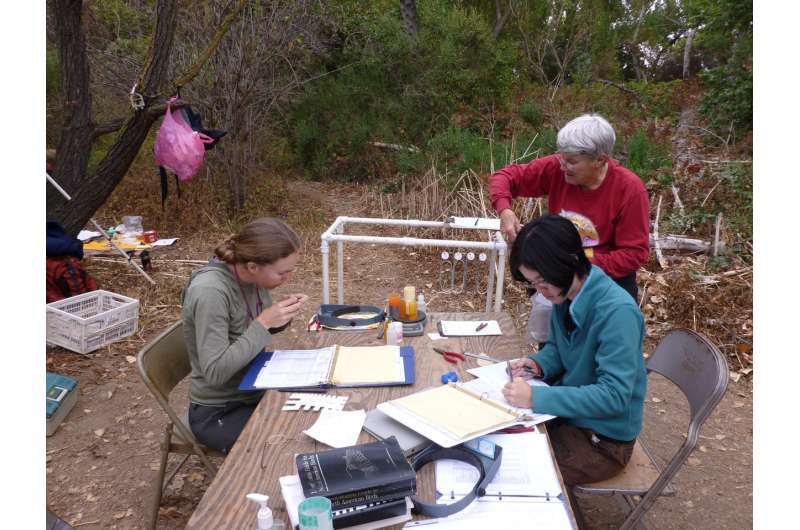Timing of migration is changing for songbirds on the Pacific coast

Changes in the timing of birds' migration can have serious negative effects if, for example, they throw the birds out of sync with the food resources they depend on. A new study from The Condor: Ornithological Applications uses a long-term dataset from the Pacific coast and shows that the timing of bird migration in the region has shifted by more than two days in both spring and fall over the past two decades.
Gina Barton and Brett Sandercock of Kansas State University used 22 years of data from the San Francisco Bay Bird Observatory in northern California, where researchers captured and marked migrants as they passed through each year. Examining how migration timing was related to three indices of climate variation, including El Niño, they focused on five species—the Pacific-slope Flycatcher, Orange-crowned Warbler, and Wilson's Warbler, which are short-distance migrants, and the Swainson's Thrush and Yellow Warbler, which are long-distance migrants. They found that, over time, birds had been migrating earlier in spring and later in fall. About one third of this change in timing was explained by variation in climate indices, suggesting that some western songbirds can respond flexibly to changing environmental conditions. However, the two long-distance migrants had smaller changes in timing that were not as closely linked to climate indices.
The study of the timing of cyclic natural phenomena such as migration is known as phenology. "Long-term studies are valuable for understanding changes in the seasonal phenology of migratory birds and other organisms," says Sandercock. "Our results join growing evidence that long-distance migrants may be less able to cope with rapid environmental change. However, the potential impacts of changing phenology on songbird population dynamics are difficult to predict, in part because our understanding of the migratory behavior of western songbirds remains incomplete."
Sandercock adds that long-term projects like this one wouldn't be possible without the commitment of many funders, technicians, and volunteers. "Our project was made possible by the dedicated efforts of many volunteers who assisted the staff of the San Francisco Bay Bird Observatory with systematic mist netting at the Coyote Creek Riparian Station. The long-term continuity could not have been maintained without stable financial support from funding by the Santa Clara Valley Water District, and the Pacific Gas and Electric Company."
More information: "Long-term changes in the seasonal timing of songbird migration on the Pacific Flyway" The Condor: Ornithological Applications, DOI: 10.1650/CONDOR-17-88.1
Provided by American Ornithological Society



















